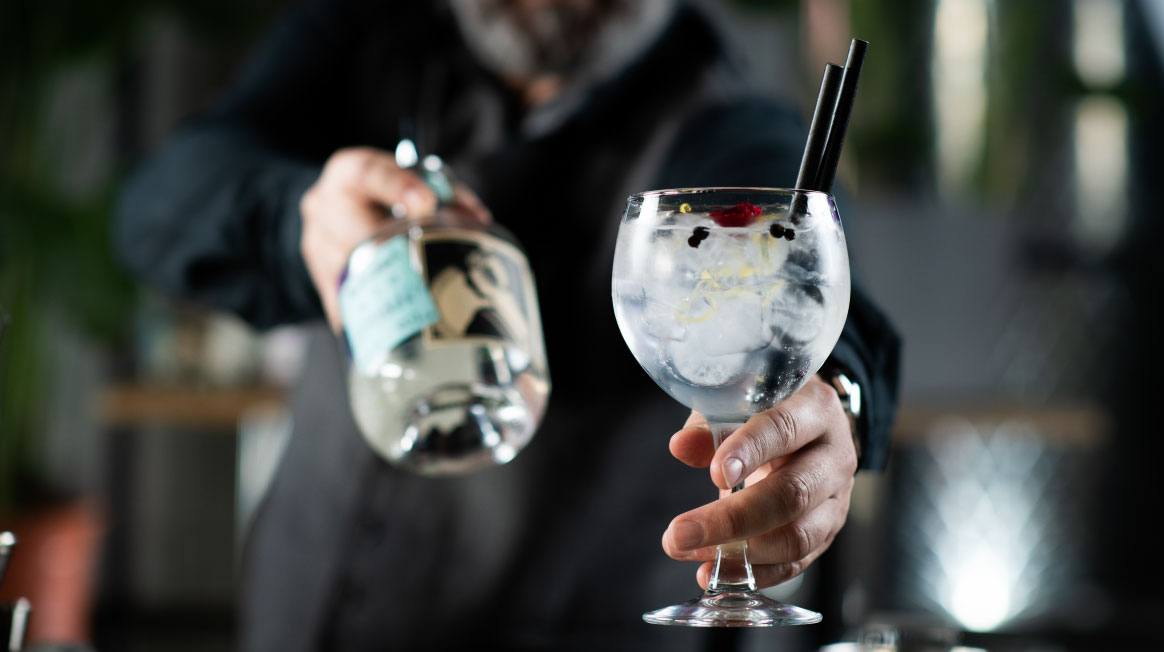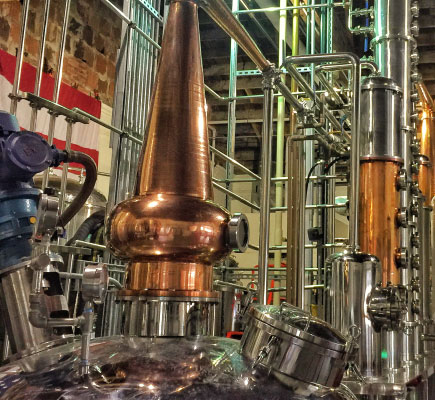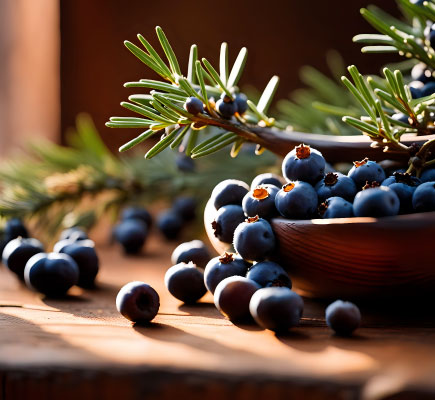
From Grain to Glass: Gin's Passage
Gin production begins with the creation of a neutral base spirit, typically distilled from grains like wheat, barley, or corn. This high-proof spirit serves as a blank canvas, ready to absorb the complex flavours of various botanicals. Juniper berries are the defining ingredient, imparting gin's signature piney notes. Distillers may also incorporate a range of botanicals such as coriander, citrus peels, angelica root, and more. The chosen botanicals are either macerated in the spirit or suspended in a still for vapour infusion. After distillation, the gin is diluted to the desired bottling strength, bottled, and prepared for distribution.
Understanding industry-specific abbreviations is essential for navigating the world of gin. Here are some commonly used terms:
- ABV (Alcohol by Volume): Indicates the percentage of alcohol in the gin.
- NGS (Neutral Grain Spirit): High-proof, neutral-flavoured alcohol used as the base for gin.
- PGI (Protected Geographical Indication): EU designation for products with specific geographic origins, like Plymouth Gin.
- TCA (2,4,6-Trichloroanisole): Compound responsible for cork taint in spirits.
Gin is bottled in various sizes to cater to different markets and preferences:
- Miniature (50 ml): Small sample size, ideal for tastings or gifts.
- Half Bottle (375 ml): Convenient for smaller households or limited consumption.
- Standard Bottle (700 ml or 750 ml): Common size for retail sales.
- Magnum (1.5 L): Larger format, often used for special editions or events.
These sizes allow producers to offer flexibility to consumers and meet various market demands.


Neutral Spirit: The Foundation of Gin
The gin-making process starts with a neutral spirit, often derived from fermented grains like wheat, barley, or corn. This spirit is distilled to a high proof, typically around 96% ABV, to ensure purity and neutrality. The choice of base material can subtly influence the final flavour profile of the gin. Once the neutral spirit is prepared, it serves as the foundation upon which the complex flavours of botanicals are built. This high-proof spirit is essential for extracting the delicate oils and essences from the botanicals during the distillation process, ultimately defining the character of the finished gin.
Botanical Selection: Crafting Unique Flavours
Botanicals are the heart of gin's distinctive flavour. Juniper berries are mandatory, providing the classic piney taste. Distillers often add a blend of other botanicals such as coriander seeds, angelica root, citrus peels, orris root, and various herbs and spices. The selection and proportion of these botanicals are carefully curated to create a unique flavour profile. Some distillers experiment with local or exotic botanicals to craft innovative gins. The chosen botanicals are either steeped in the neutral spirit (maceration) or placed in a basket within the still (vapour infusion), allowing their flavours to infuse during distillation.
Distillation: Infusing and Refining Flavours
During distillation, the neutral spirit is infused with the selected botanicals to extract their flavours. In the maceration method, botanicals are soaked in the spirit before distillation. Alternatively, vapour infusion involves placing botanicals in a basket within the still, allowing alcohol vapours to pass through and absorb the flavours. The distillation process separates the desired flavours and alcohol from unwanted compounds. The resulting distillate is a concentrated gin with a high alcohol content. This process is crucial for achieving a balanced and refined flavour profile, ensuring that the essence of each botanical is captured in the final product.
Dilution and Bottling: Final Preparations
After distillation, the gin is typically at a high alcohol content and requires dilution to reach the desired bottling strength, commonly around 40-45% ABV. Pure water is added to achieve this balance, ensuring the gin is palatable and meets legal standards. Some distillers may allow the gin to rest or age briefly to harmonize the flavours. Once diluted, the gin is filtered to remove any impurities and then bottled. Labels are applied, and the bottles are packaged for distribution. This final stage ensures that the gin is ready for the market, maintaining quality and consistency for consumers.



